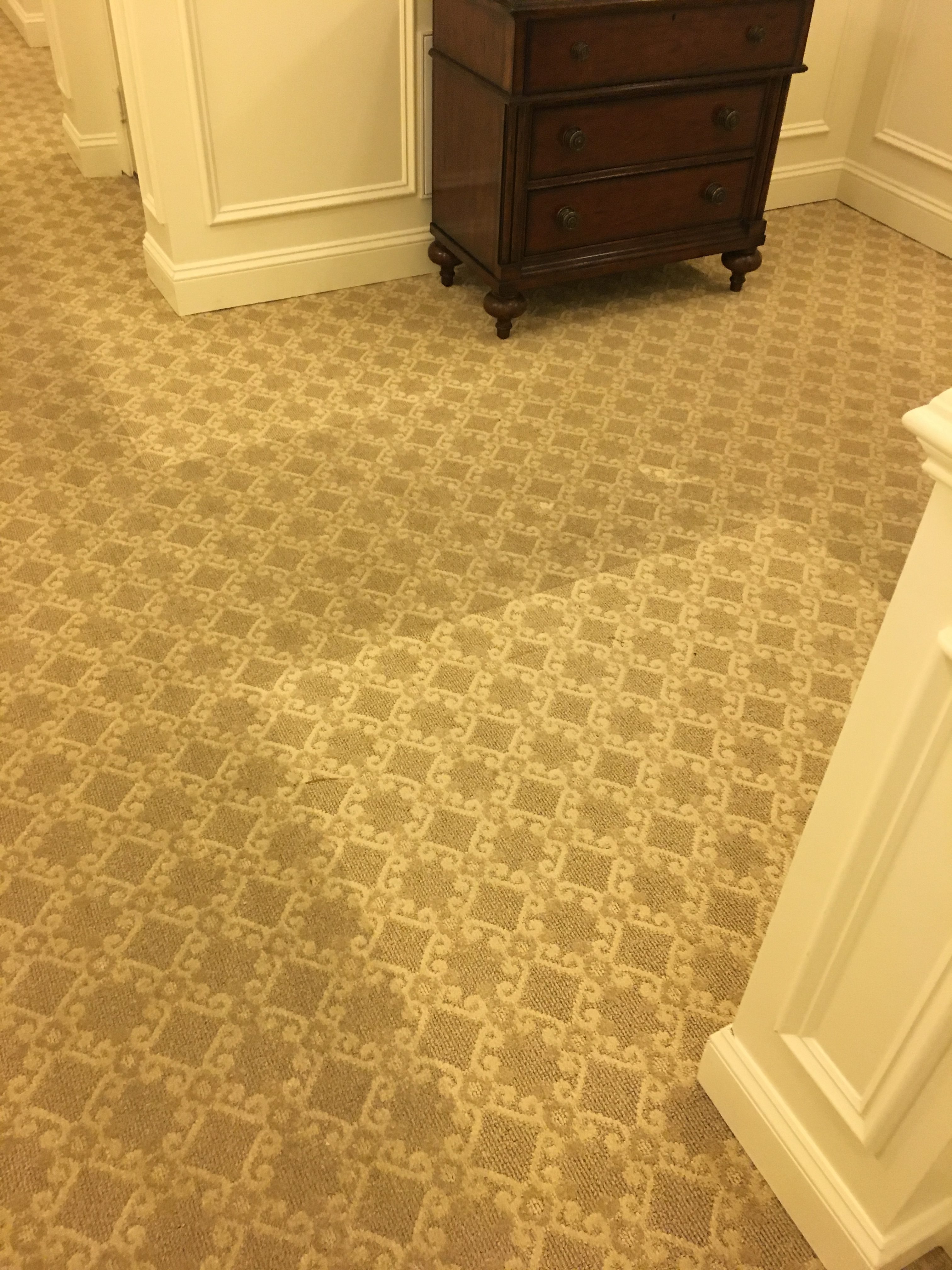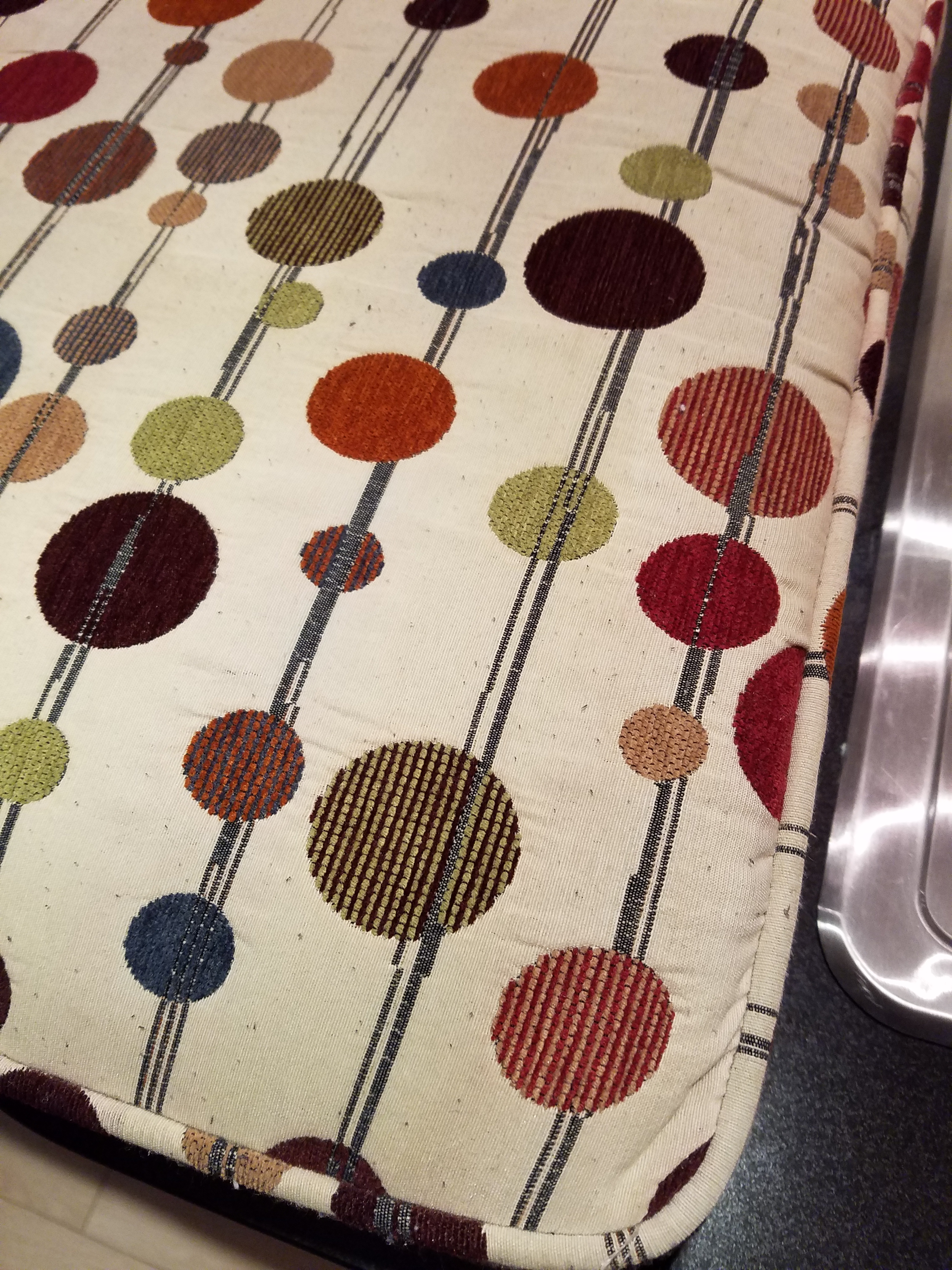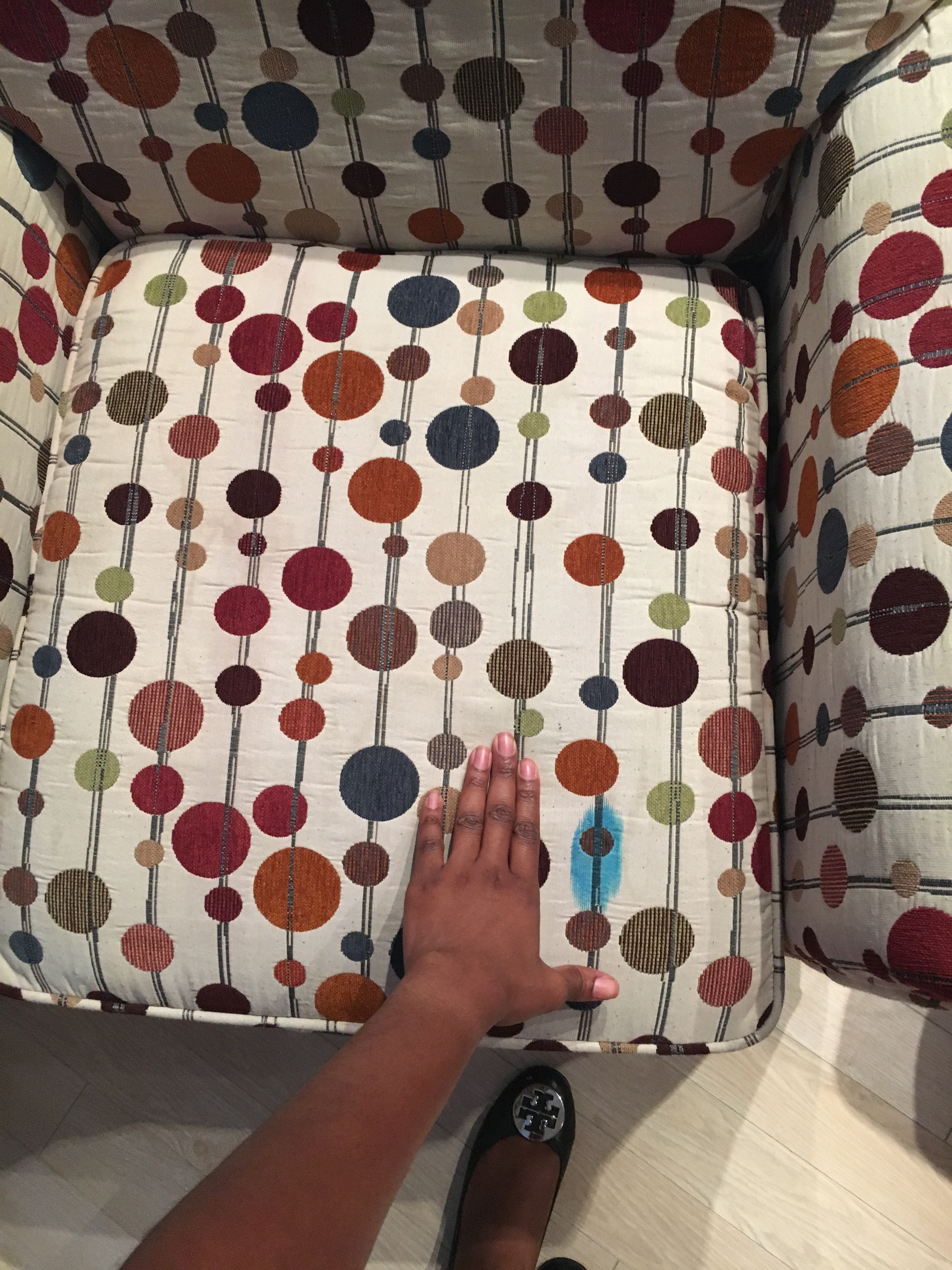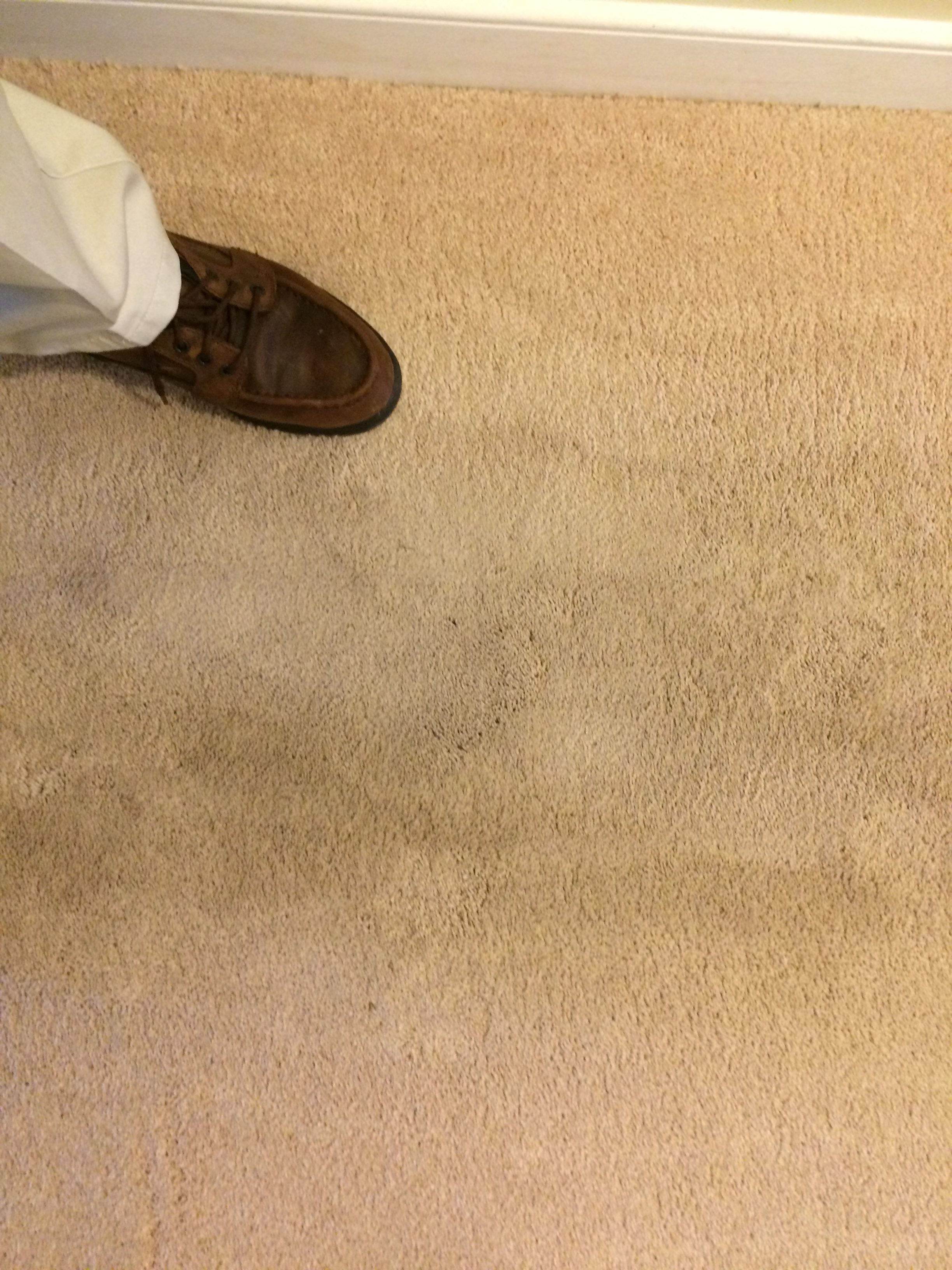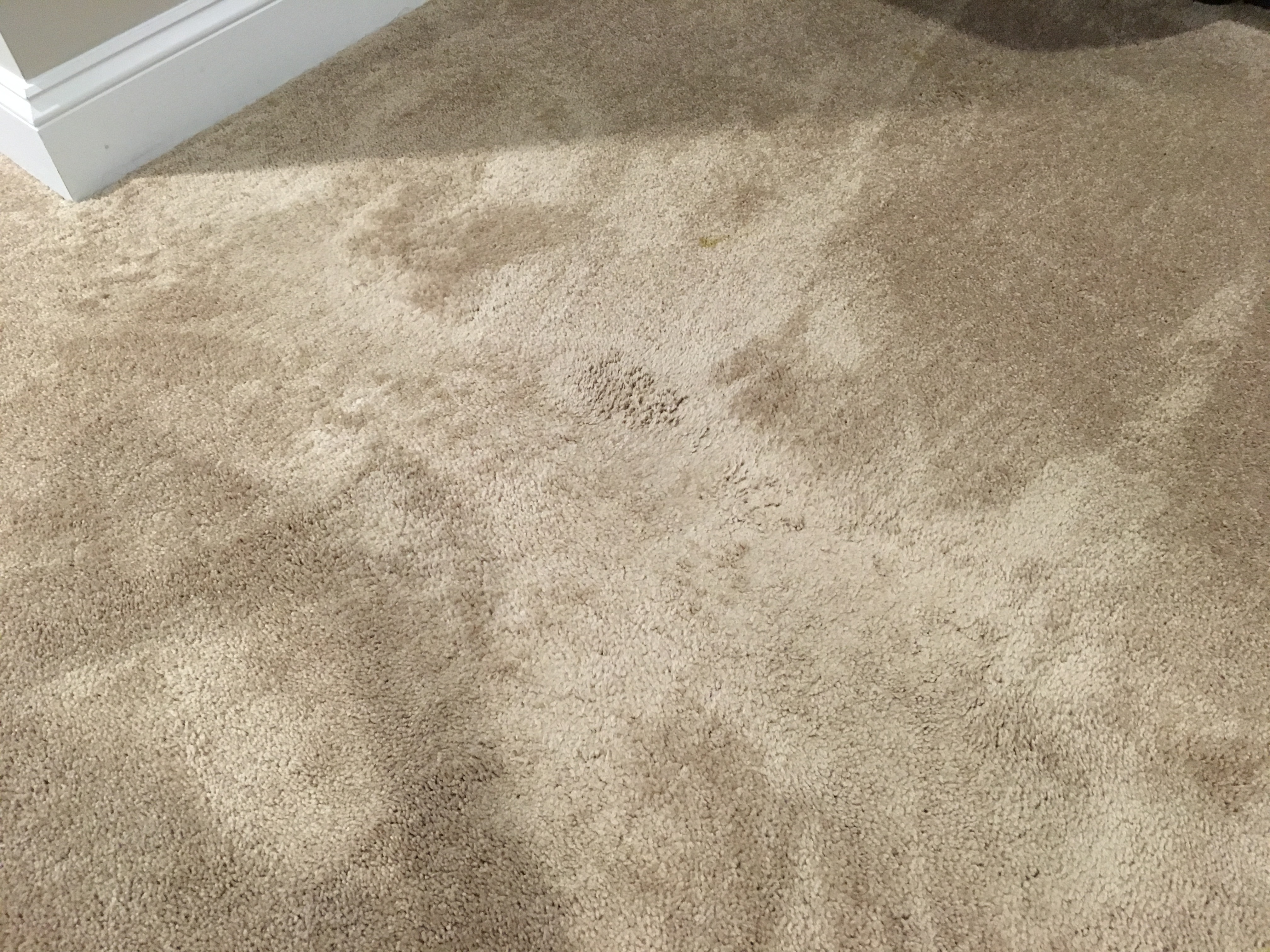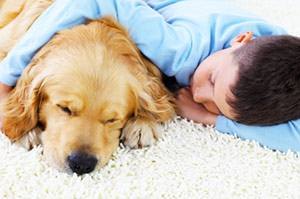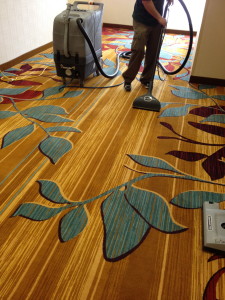What is carpet roll crush?
As an Certified Carpet Inspector roll crush is one of the most frequent issues I am asked to go out and correct. It is noticeable immediately after or during installation. if it does not disappear in the first 2 weeks it can be professionally addressed. 98% of the time it can be fixed by steaming and pile lifting the carpet pile. It can happen to broadloom carpets or carpet tiles. If you notice roll crush talk to the person who sold you the carpet soon after installation. 
According to The Carpet &Rug Institute:
“Roll crush usually appears across the width of the carpet as areas of the pile yarn that have flattened due to the weight of the roll. Areas of crush may appear darker or lighter and usually are identified as widthwise bands. Roll crush is not considered a manufacturing defect. Most roll crush occurs as a result of stacking a large number of rolls on top of one another. Roll crush also may occur during shipping where rolls are loaded several rolls high.
Roll crush sometimes can be alleviated in carpet using steam or hot water extraction cleaning. Often it can be removed using a spray bottle and misting the area with water. Let it stand for five minutes and agitate with rug rake or by vacuuming. Most rolls of carpet will exhibit some degree of roll crush immediately after the roll has been unwrapped. In most cases, minor roll crush will disappear after the yarn has been allowed sufficient time to recover.”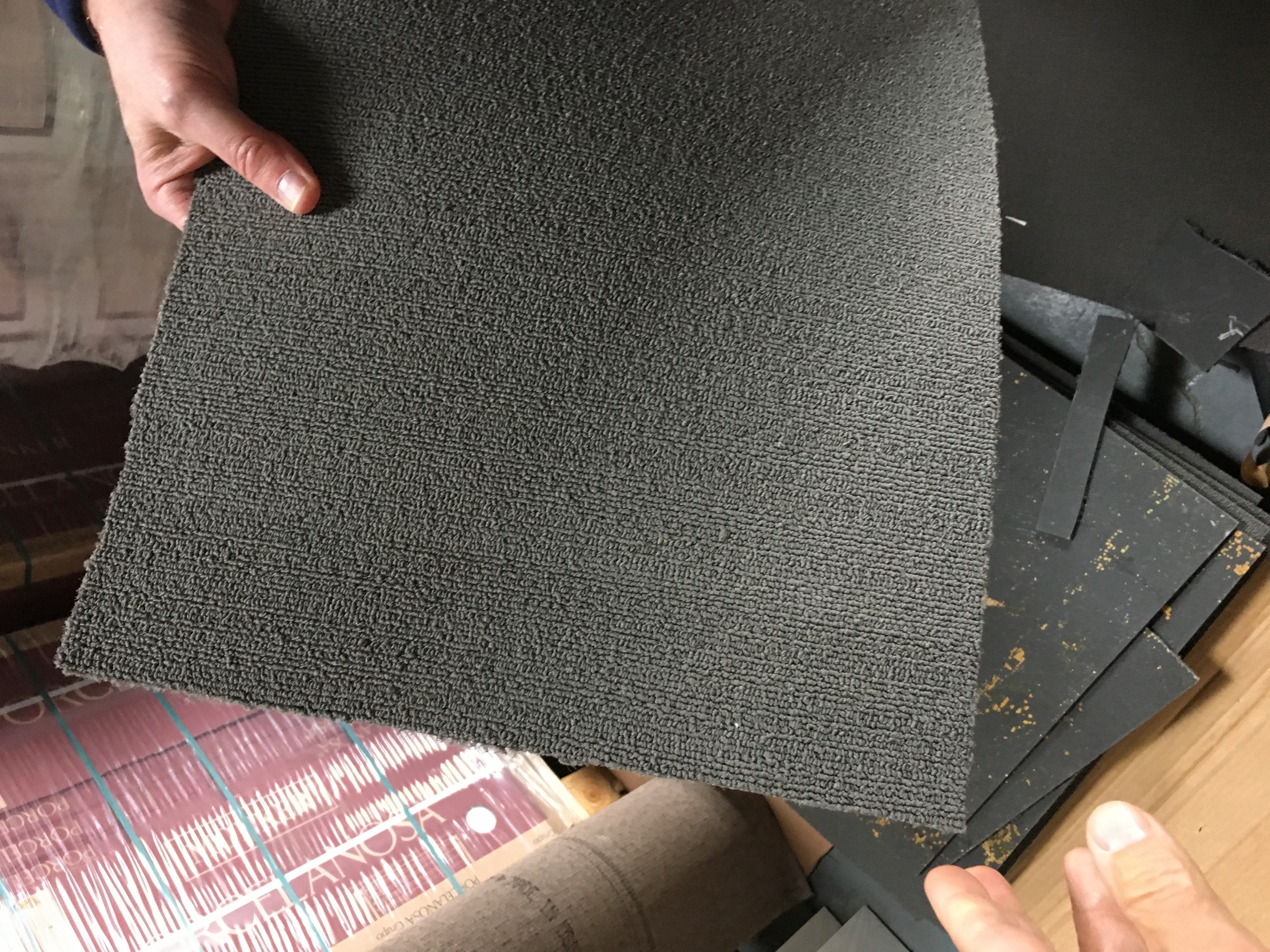
Any carpet or rug new or old can experience roll crush if stored for excessive periods of time in an unconditioned space under pressure from things that are stacked on top of it. This can not be confused with water marking, shading or pile reversal that are topics of other ECO Blogs to come.

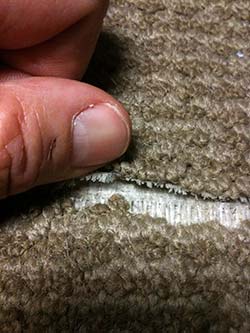
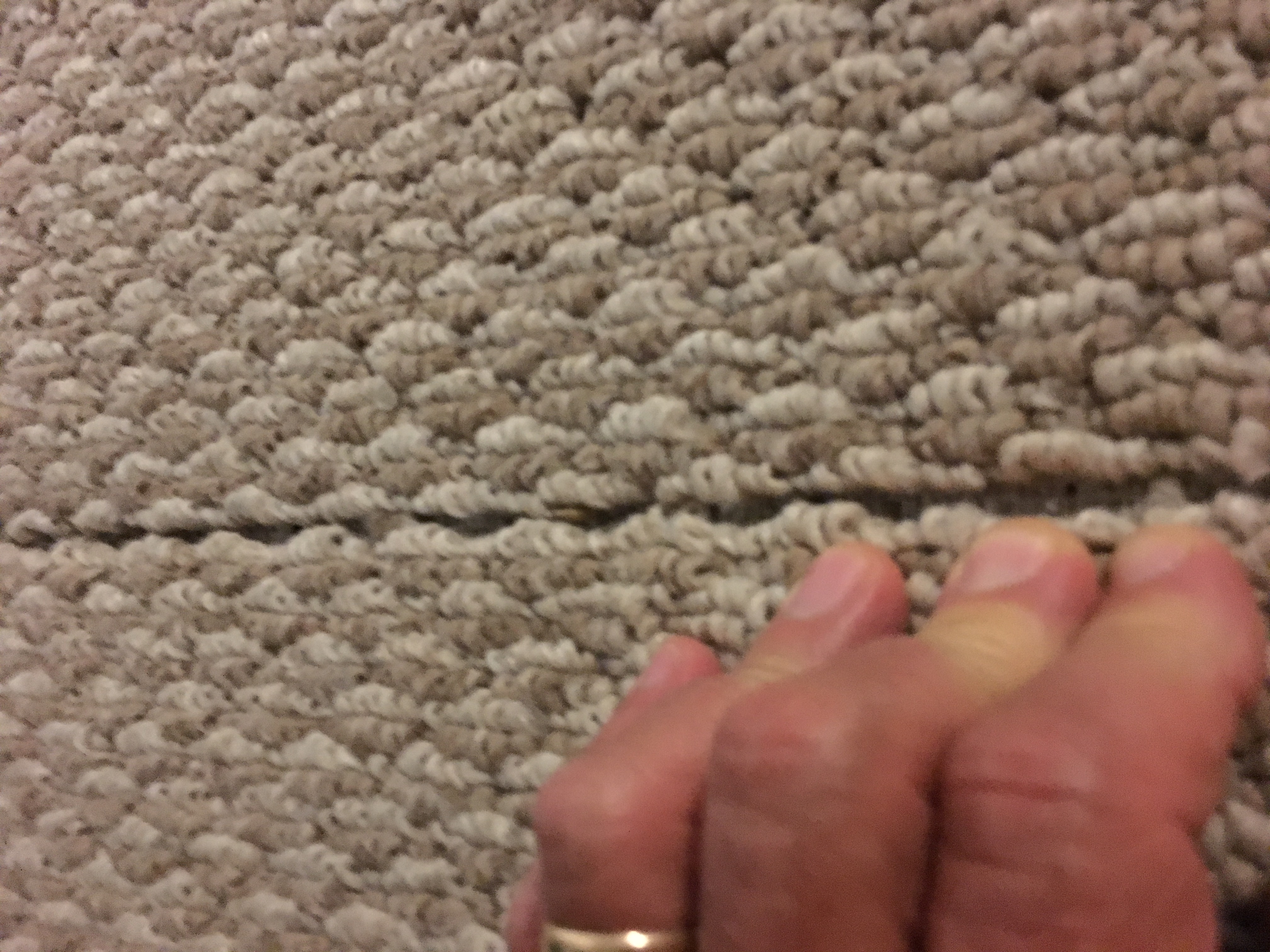
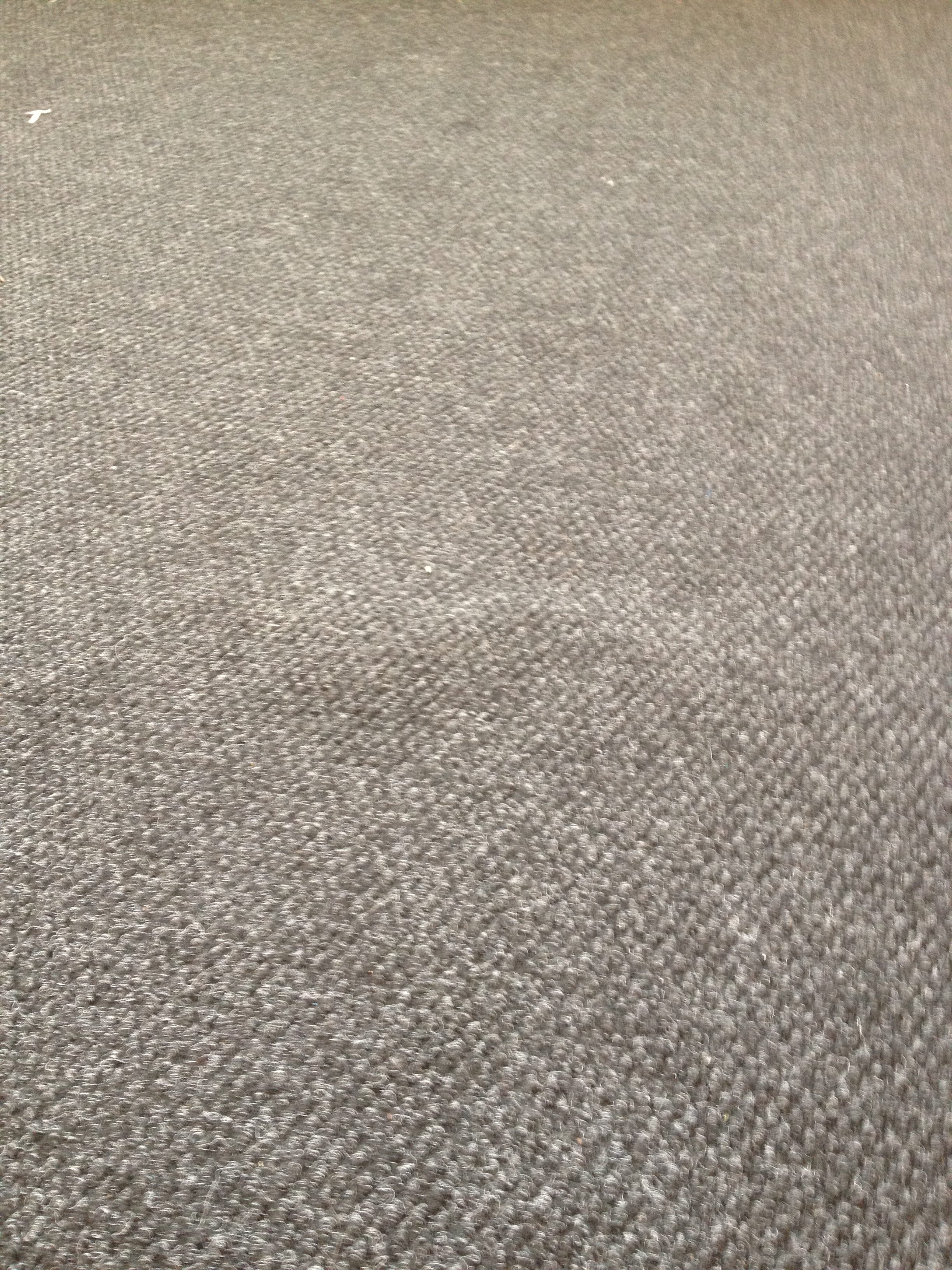 How do these things happen?
How do these things happen?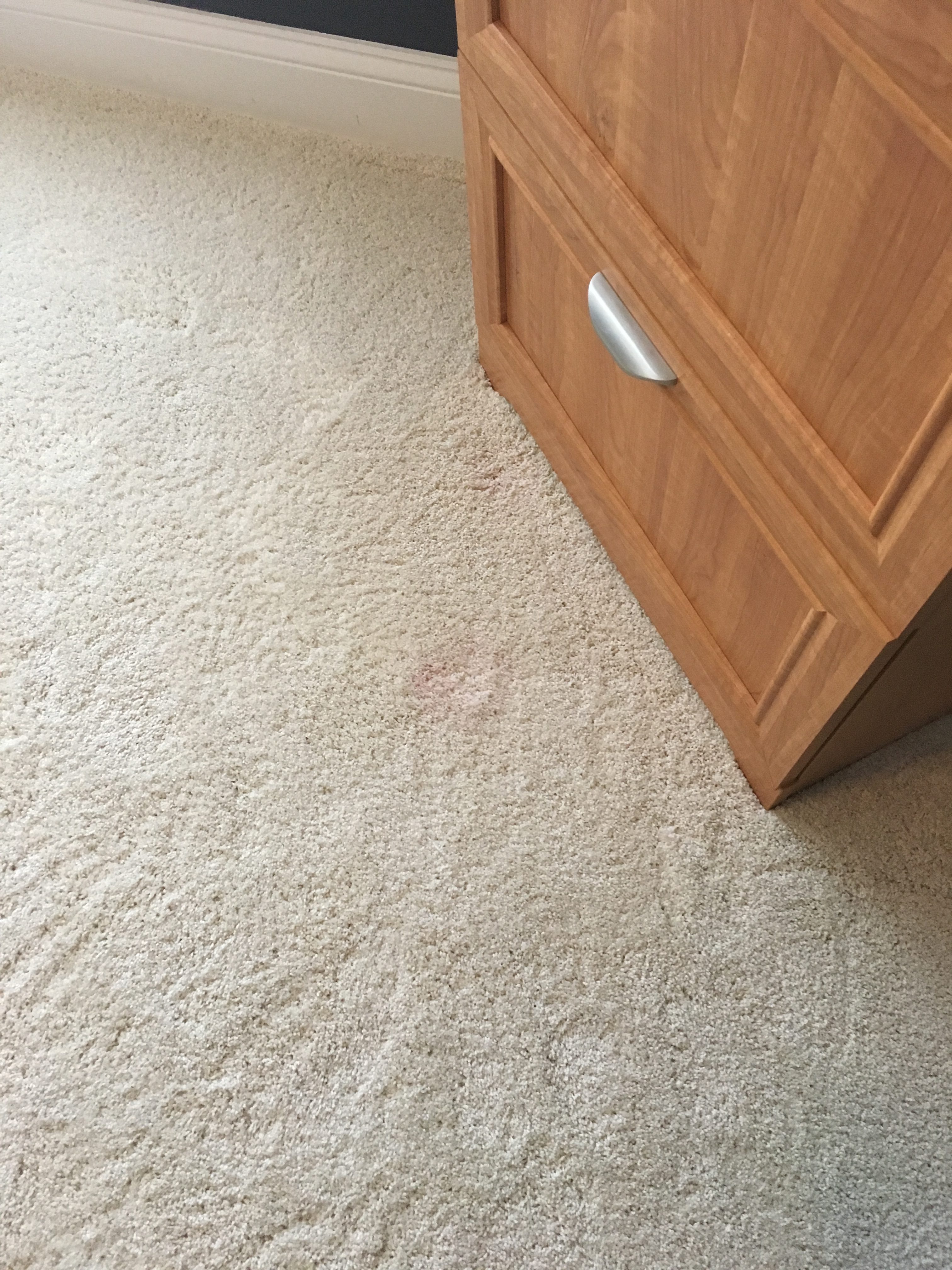
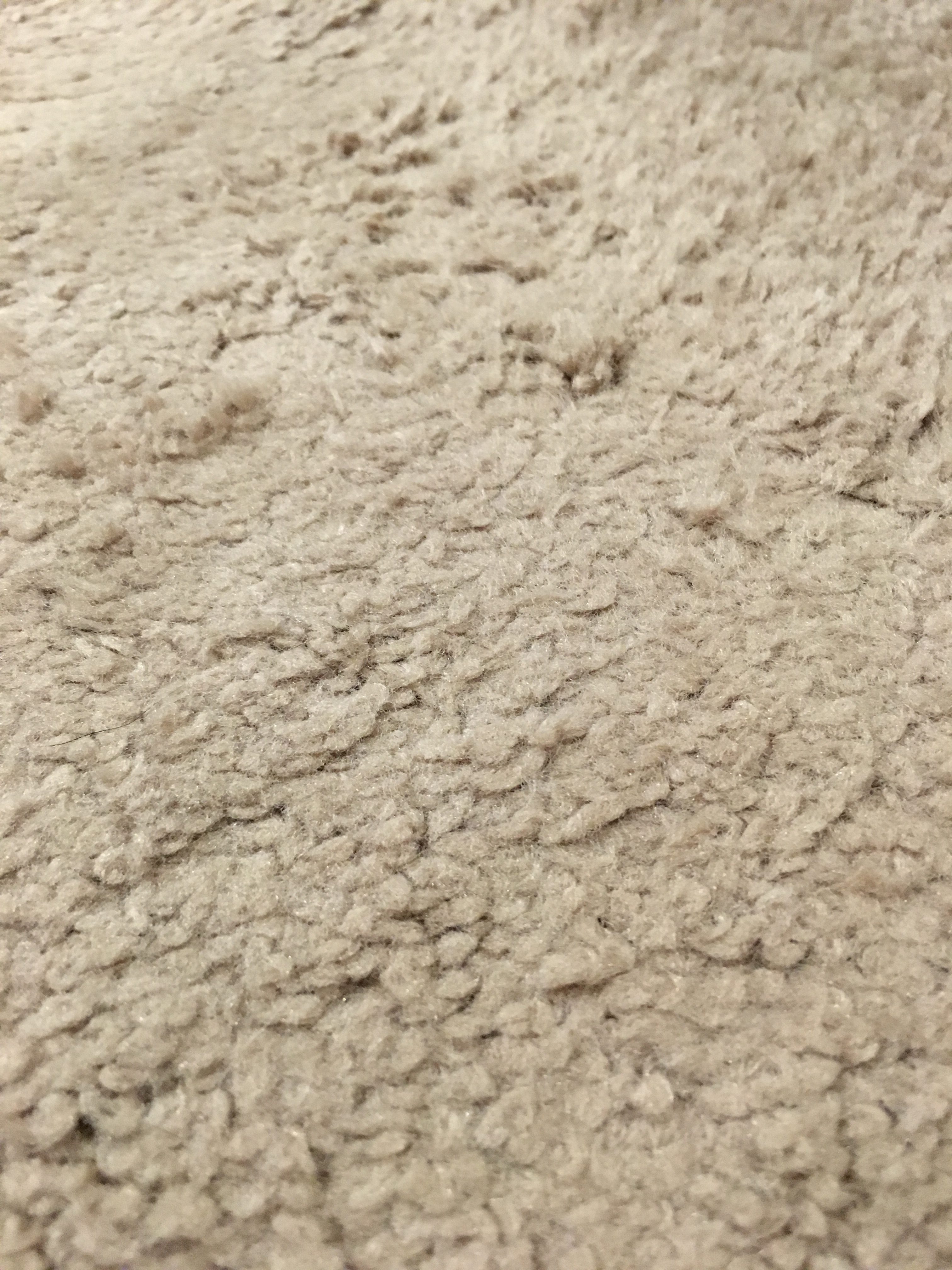
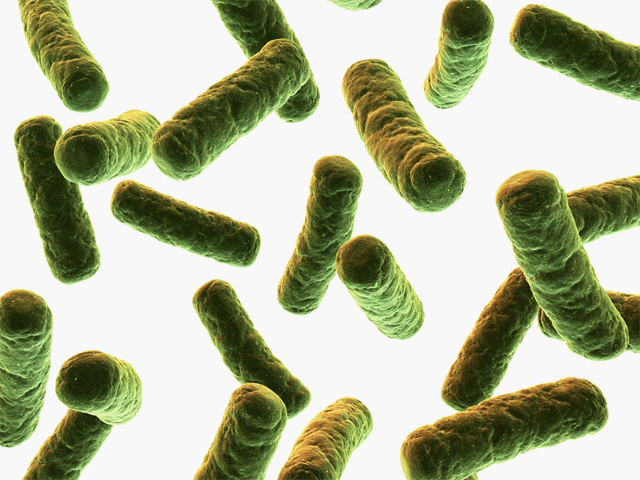 Odors in carpets from pets ,water damage, mildew or general use can often mean that foreign substances like spoiled milk, bacteria, mold or mildew is present in your carpet or padding. These odors sometimes can be difficult to remove or even find. Many use black lights to reveal pet urine accidents. Odors usually come from “Biofilms” (sticky microbe friendly habitats) that support rapid microbial growth. Excessive moisture left in carpet (more than 12 hrs) or even high humidity over an extended time may add to your odor issues.
Odors in carpets from pets ,water damage, mildew or general use can often mean that foreign substances like spoiled milk, bacteria, mold or mildew is present in your carpet or padding. These odors sometimes can be difficult to remove or even find. Many use black lights to reveal pet urine accidents. Odors usually come from “Biofilms” (sticky microbe friendly habitats) that support rapid microbial growth. Excessive moisture left in carpet (more than 12 hrs) or even high humidity over an extended time may add to your odor issues.




 Disinfectants are usually not very effective on pet odors. They may kill germs on hard surfaces but do not usually work well on urine in carpet. Using bleach is typically not recommended on any textile. Hydrogen peroxide odor cleaning products can be effective but still you need to have some professional training on how to use them. Many do-it -yourself articles recommend use baking soda and vinegar mixtures but then can make a big mess and usually do not remedy the odor issues.
Disinfectants are usually not very effective on pet odors. They may kill germs on hard surfaces but do not usually work well on urine in carpet. Using bleach is typically not recommended on any textile. Hydrogen peroxide odor cleaning products can be effective but still you need to have some professional training on how to use them. Many do-it -yourself articles recommend use baking soda and vinegar mixtures but then can make a big mess and usually do not remedy the odor issues.
